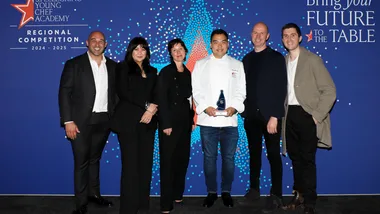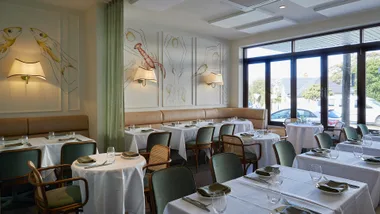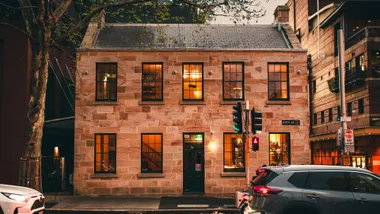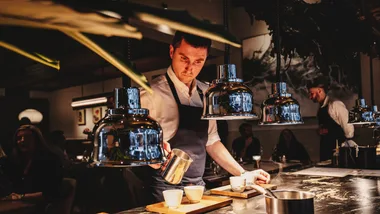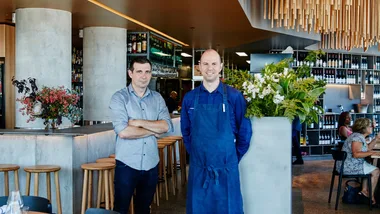Like any great read, a memoir must have a reason to be and a tale to tell. These stories of lives lived through food transcend the everyday.
**Blood, Bones and Butter by Gabrielle Hamilton (Random House)
** The force behind New York’s (now famed) Prune is a sucker for working the Sunday brunch egg shift and relishes going a few rounds with the burners (“I always feel like I am a contender in a nicely matched bout every time we meet”) and she’s also a fine raconteur. Here is her life in countless kitchens – from her childhood in rural Pennsylvania to her mother-in-law’s villa in Puglia. Cooking adventures are a given, but acutely observed, honest accounts of love, family and food provide the thread.
**Kitchen Confidential by Anthony Bourdain (Bloomsbury)
** Chefs as rough-edged, substance-fuelled adrenaline junkies? Restaurant kitchens as dark dens of iniquity run by a pack of desperados who’d put the French Foreign Legion to shame? The ballsy Bourdain blend of “sex, drugs, bad behaviour and haute cuisine” threw open the swinging doors onto chef sub-culture and we’ve never looked back. And given his subsequent TV fame and fortune, neither has he.
**Garlic and Sapphires: The Secret Life of a Critic in Disguise by Ruth Reichl (Random House/Allen & Unwin)
** It’s the final in a beautifully told trilogy that begins in a modest Jewish home in Greenwich Village, hits the highs of Berkeley in the 1970s and here comes full circle as Reichl (who goes on to edit American Gourmet) lands the coveted New York Times restaurant critic gig. Her observations as reviewer in disguise (and what disguises!) make for memorable reading.
Honey from a Weed: Fasting and Feasting in Tuscany, Catalonia, the Cyclades and Apulia**by Patience Grey (Prospect Books)
** Way before spending years in Provence and thousands of days in Tuscany, Patience Grey lived and roamed with her sculptor partner across the Mediterranean – from the marble quarries of Carrara to the Greek island of Naxos. Her stories and recipes draw on wild ingredients, rudimentary cooking implements and the rhythms of peasant life, with an almost poetic timelessness.
**Shark Fin and Sichuan Pepper: A Sweet-Sour Memoir of Eating in China by Fuchsia Dunlop (Ebury Press)
** Few Westerners have managed to unlock the world of Chinese cooking in all its technical and cultural (and occasionally ethical) complexity as this British author-researcher who studied in Sichuan province in the early 1990s and ended up in culinary school. Dunlop’s knowledge is endless and her writing illuminating.
**Toast: The Story of a Boy’s Hunger by Nigel Slater (Fourth Estate)
** One of Britain’s most respected writers on food remembers the tastes of a suburban childhood – Agas and rice pudding, sherry trifle and spaghetti Bolognese. And, of course, toast. “It is impossible not to love someone who makes toast for you. People’s failings… fall into insignificance as your teeth break through the rough, toasted crust and sink into the doughy cushion of white bread underneath. Once the warm, salty butter has hit your tongue, you are smitten.” An ode to the edible simplicities of ’60s England.
**The Man Who Ate Everything by Jeffrey Steingarten (Penguin Random House)
** After landing a job as American Vogue’s restaurant reviewer, Steingarten sets out on a path of doggedly curious omnivorousness. In other words, he decides to taste, eat and cook everything. This random and often amusing collection of essays ranges from fad diets to Alsatian choucroute, kaiseki in Kyoto to making perfect pasta, mash, pizza, and American barbecue.
**Plenty: Digressions on Food by Gay Bilson (Lantern)
** Writer, cook and former restaurateur Gay Bilson has led a life less ordinary. From opening the legendary Tony’s Bon Gout with her then-husband, Tony Bilson, to the heydays of Berowra Waters Inn and Bennelong at Sydney Opera House, she chronicles key moments in Sydney restaurant history, peppered with erudite digressions. And more than a few blunt Bilson observations.
**Heat by Bill Buford (Vintage Books)
** Accepting a challenge from chef Mario Batali, seasoned writer Bill Buford ties on an apron and goes into the kitchen at Babbo, Molto Mario’s signature New York restaurant. What follows is as much a profile of Batali as an ode to all things cucina Italiana, including a certain Tuscan butcher who’s since become a celeb in his own right. (Dario Cecchini. Look him up.)
**Fragrant Rice: My Continuing Love Affair with Bali by Janet De Neefe (Periplus)
** This Aussie abroad has made Bali her home. And, over time, set up a hotel, restaurants, a store and a cooking school, as well as annual writers’ and food festivals. Behind those achievements is a family life adapted to the rhythms, recipes and rituals of Balinese tradition. Refreshingly devoid of Eat Pray Love moments, De Neefe’s autobiography with recipes opens with a moving account of the 2002 Bali bombing.
**The Making of a Chef and The Soul of a Chef by Michael Ruhlman (Penguin)
** A writer goes to cooking school. But not just any. Michael Ruhlman attends classes at the Culinary Institute of America to write about how the school trains chefs. He followed up the well-received The Making of a Chef with The Soul of a Chef, which covers the institute’s certified master chef exam, then focuses on two of America’s top chefs, Michael Symon and Thomas Keller. They’re great reads that could make for handbooks for wannabe professionals, offering a hyperbole-free insight into the rigours of classic culinary training.
**An Omelette and a Glass of Wine by Elizabeth David (Penguin)
** War-time Britain was a bleak place. The eastern Mediterranean, on the other hand, offered a frugal but fascinating food-scape. Credited with revolutionising British cooking with her landmark A Book of Mediterranean Food, published in 1950, Elizabeth David went on to write seven definitive cookbooks. This largely autobiographical collection, published in 1984, reveals much about the woman behind the words.

